Best Java
training institute in Bangalore
Best Python
training institute in Bangalore
Best Auto cadd
training institute in Bangalore
Best Digital Marketing
training institute in Bangalore
Jnana Infotech Training Institute provides best training and 100% placement guarantee on Java python course ,Auto CAD/CAM and Digital Marketing Course . Our experienced faculty are committed to deliver quality education and nurture students skills to get their dream job.
Course & Placement Details
Course & Placement Details
Our Recruitment partners




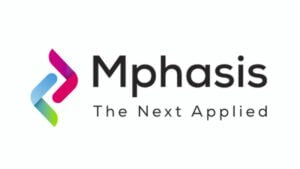






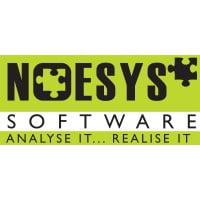
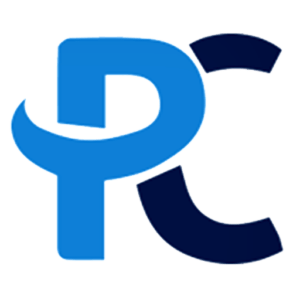







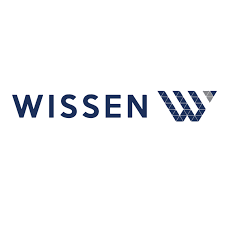








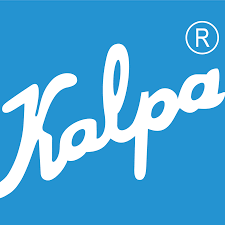
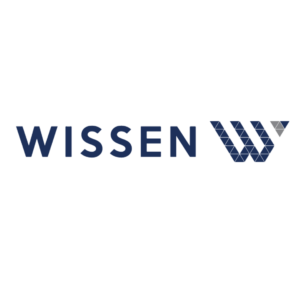



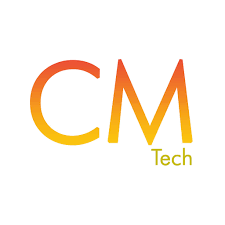






Best Cadd Training Institute in Bangalore Offers Training on Below Courses

- Autocad for Civil / Architectural
- Revit Architecture
- 3ds Max
- Google Sketch up
- V-ray
- Staad-Pro
- Revit Mep
- E-tabs
- Revit Structure
- BIM 360
- Lumion
- Primavera
- MSP (micro soft project)

- Autocad 2D and 3D
- Solid Works
- Catia
- Nx CAD / Unigraphics
- Creo / Pro-E
- Ansys
- Hypermesh
- GD & T
- NX-CAM
Best Java Training Institute in Bangalore Offers Training on Below Courses

- C | C++ Programming
- Python Training
- Core Java Training
- Advanced Java Training
- JAVA Framework Training
- HTML5, CSS3, Bootstrap
- JAVAScript / JQuery Training
- Angular Training
- React JS
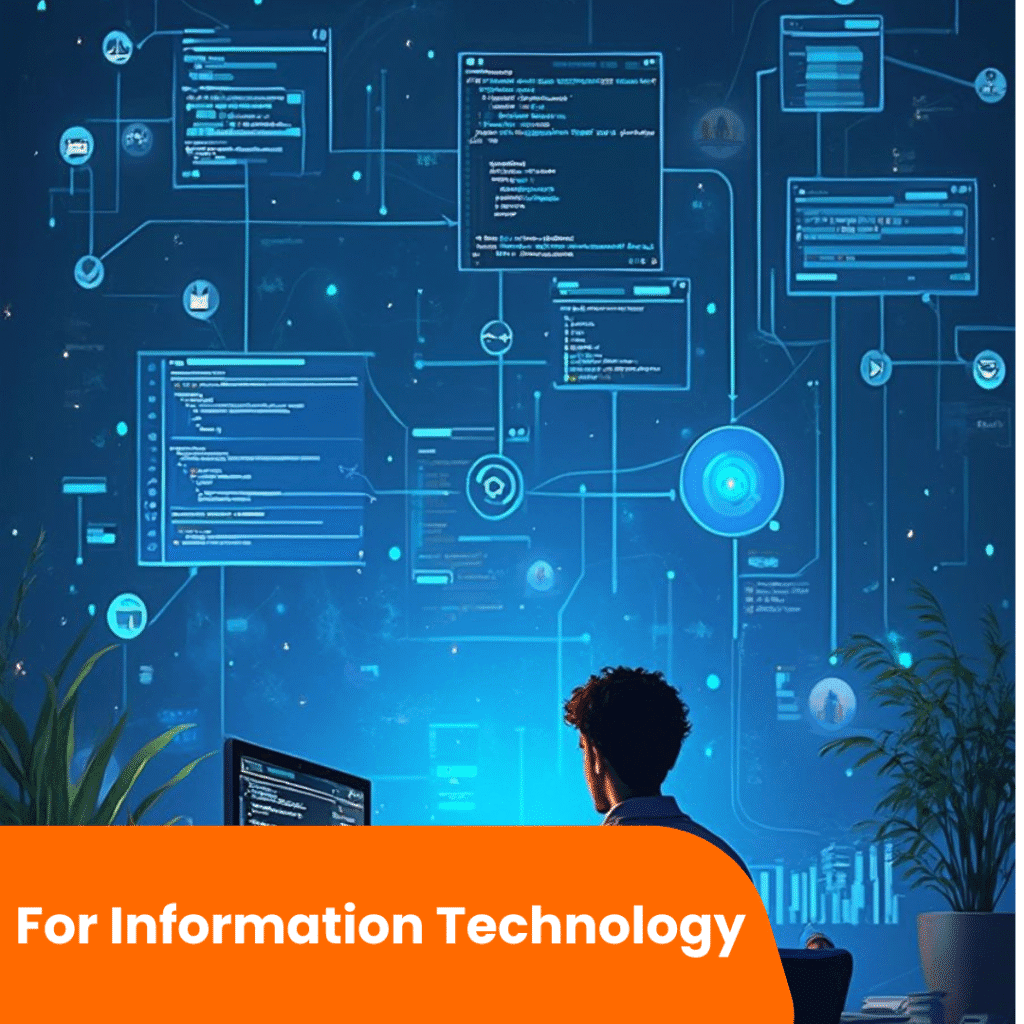
- React Native Training
- Mysql Development
- Oracle Advanced PL/SQL Development Training
- MongoDB Training
- Frontend Development
- Web development
- Fullstack java
- Fullstack python
- Fullstack web development
Best Digital Marketing Course Training Institute in Bangalore Offers Training on Below Courses

- Graphic design
- Website development
- Search engine optimization
- Social media optimization
- Performance marketing
- Social media ads
- Local seo

- Email marketing
- Whatsap marketing
- Youtube marketing
- Influencer marketing
- Self branding
- Real time projects
- Affiliate marketing
Click here to view our location on map
What is Autocad
AutoCAD is a CAD software that is extensively utilised in nearly every engineering discipline. designing, annotating, and drafting 2D geometry and 3D models with mesh objects, solids, and surfaces With tools tailored to your sector, design more quickly. By automating processes like scheduling, inserting blocks, and comparing drawings, among other things, you will pick up all the fundamental and sophisticated abilities required for mechanical engineering.
Why I Learn Autocad?
Industry Standard: AutoCAD is extensively utilised in many different industries, such as manufacturing, engineering, architecture, and construction. Professionals in these domains frequently need to know how to use AutoCAD, making it a common piece of software in the industry.
Employability: Mastering AutoCAD can help you become more marketable. Having AutoCAD skills on your CV will help you stand out from the competition in the job market, as many businesses look for applicants with these abilities.
Effective Design Process: The design process may be made much more efficient with AutoCAD. Compared to traditional manual drafting, it provides tools and capabilities that automate repetitive activities, making it possible to create complicated designs more quickly.
Precision and Accuracy: AutoCAD enables precise and accurate drawings. This is crucial in industries where detailed and accurate representations of objects or structures are essential, such as architecture and engineering.
Versatility: AutoCAD is a versatile tool that can be used for both 2D and 3D design. This versatility makes it applicable to a wide range of projects and industries, from creating floor plans to modeling complex 3D structures.
Required conditions:
Beginners can benefit from taking an AutoCAD mechanical course, which also enables CAD professionals advance their formal education (ITI, diploma, or degree) in a relevant engineering stream and enhance their skill sets in basic engineering design understanding.
Goal of the Course:
This course will give you a solid basis for progress by covering all the essential skills required to use AutoCAD effectively. You will learn how to utilise AutoCAD as a drawing and design tool in depth in this course.
Java training centre in Bangalore
Java is a high-level, object-oriented programming language that is designed to be platform-independent, meaning that Java programs can run on any device that has a Java Virtual Machine (JVM). It was developed by James Gosling and his team at Sun Microsystems (which is now owned by Oracle Corporation) and released in 1995.
Key features of Java include:
Platform Independence: Java programs are compiled into an intermediate form called bytecode, which can run on any device with a compatible JVM. This “write once, run anywhere” capability is a central aspect of Java’s design.
Object-Oriented: Java is primarily an object-oriented language, which means that it emphasizes the use of classes and objects. It supports principles such as encapsulation, inheritance, and polymorphism.
Multi-threading: Java has built-in support for concurrent programming through its multi-threading features, allowing developers to write programs that can perform multiple tasks simultaneously.
Security: Java includes various security features, such as the ability to run applets in a restricted environment (sandbox) to prevent potentially harmful code from causing harm.
Robust and Portable: Java includes strong memory management, automatic garbage collection, and exception handling, making it a robust programming language. Additionally, its platform independence contributes to its portability.
Rich Standard Library: Java comes with a comprehensive standard library that provides pre-built functionality for a wide range of tasks, simplifying development and saving time for programmers.
Community Support: Java has a large and active community of developers, which has contributed to a wealth of libraries, frameworks, and tools that further enhance its capabilities.
Advantages of Java:
- Platform Independence: Java programs can run on any device with a Java Virtual Machine (JVM), making them platform-independent.
- Object-Oriented Programming (OOP): Java’s OOP principles promote code organization, modularity, and reusability.
- Rich Standard Library: Java comes with a comprehensive standard library, providing pre-built functions and classes for common tasks.
- Multi-threading Support: Java supports multi-threading, enabling concurrent execution of multiple tasks within a program.
- Strong Community Support: A large and active Java developer community provides resources, forums, and third-party libraries.
- Security: Java incorporates built-in security features, such as APIs for cryptography, authentication, and access control.
- Automatic Memory Management (Garbage Collection): Java’s garbage collection system automatically manages memory, reducing the risk of memory leaks.
- Scalability: Java is suitable for developing scalable applications, making it popular for large-scale enterprise solutions.
- Wide Industry Adoption: Java is widely used across various industries, ensuring a large pool of skilled developers and job opportunities.
- Continuous Evolution: Regular updates and improvements keep Java relevant and up-to-date, with ongoing support from the Java community and Oracle.
Disadvantages of Java:
- Performance: While Java’s performance has improved, it may not be as fast as languages like C or C++, especially in resource-intensive applications.
- Memory Consumption: Java applications can have higher memory consumption due to the overhead of the Java Virtual Machine (JVM).
- Learning Curve: Java’s syntax and concepts might pose a steeper learning curve for beginners compared to simpler languages.
- Limited Hardware Access: Java’s platform independence comes at the cost of limited direct access to hardware, which can be a drawback for certain system-level programming tasks.
- Lack of Low-Level Manipulation: Java abstracts many low-level details, which may limit fine-grained control over certain system resources.
- Verbosity: Java code can be more verbose compared to some modern programming languages, requiring more lines of code to accomplish certain tasks.
- Startup Time: Java applications may have longer startup times due to the initialization of the JVM and loading of necessary classes.
- Single Paradigm: While Java supports OOP, it lacks certain features found in languages dedicated solely to functional programming or other programming paradigms.
- Dependency on the Java Virtual Machine (JVM): Since Java applications rely on the JVM, changes or issues with the JVM can impact the performance and behavior of Java programs.
- Oracle’s Licensing Changes: Oracle’s changes to Java’s licensing and support model have raised concerns for some businesses, especially those using older versions of Java.
Things you will learn in Core JAVA Training
We help our students at every stage, from the start of a course to the actual skill-building technique. Our curriculum covers the following.
- Core Java Might as a Programming Language
- Relevance of C language in the ultra-modern century
- Codification: Classification of Programming Languages
- Machine Level – 11000101
- Assembly Level – ADD AX, BX
- High Level – print(10+12)
- Memory Hierarchy
- Object File V/s Executable File
- Assembler V/s Compiler
- Compiler V/s Interpreter
- First Java Program: Prototype of main() method – Visibility V/s Accessibility
- Know your commands: Java commands to Compile and Execute
- Nitty-gritty of Java: .class File
- Command Line Arguments
- Valid Signatures of main() method
- Streams in Java
- Object Orientation & its Principles
- Classes and Objects
- Design Guesser Game Application
- Java Documentation (Javadoc)
- Statically typed V/s Dynamically typed
- Java Naming Conventions
- Integer data types – byte, short, int, long
- How real-world data is stored in Memory?
- Overflow V/s underflow
- Wraparound behavior
- Binary | Decimal | Hexadecimal | Octal representations
- Intro to IEEE
- BigDecimal class
- Strictfp keyword
- ASCII Encoding Format V/s
- UNICODE Encoding Format
- UTF – 8 V/s UTF – 16 V/s UTF – 32
- Escape sequences
- Methods
- Types of Methods
- Method Overloading
- Don’t fall for the illusion: VirtualPolymorphism
- Method Overloading with Type Promotion
- Overloading of main() method
- Variable Approach V/s Array Approach
- Types of Arrays
- Regular V/s Jagged Arrays
- Array of Objects
- Control Structures
- Loops in Java – for | while | do-while | for-each
- Arrays Programming
- java.util.
- Arrays inbuilt class
- Programming with Matrices
- Time Complexity V/s Space
- Complexity
- Know when to use: Advantages and Disadvantages of Arrays
- Immutable V/s Mutable Strings
- Memory allocation of Strings
- Common Operations on Strings – equals() | concat() | intern() | method()
- Inbuilt methods of String class
StringBuffer and StringBuilder classes - StringBuffer V/s StringBuilder
- C Strings V/s Java Strings
- Private access modifier
- Accessors and Mutators
- Shadowing Problem
- “this” keyword
- builder does the setting up: Constructors
- Types of Constructors
- Constructor Overloading
- Constructor Chaining
– this()
– super() - Singleton Design Pattern
– Singleton Class
- Ideal Execution of a Java Program
– static control flow
– instance control flow
– with both static and instance elements - Static variables V/s Instance variables – class variables
- Static methods V/s Instance methods
- Static blocks V/s Instance blocks
- Inner classes V/s Nested classes
- “extends” keyword
- Advantages of Inheritance
- Rules of Inheritance
- Types of Inheritance
- “super” keyword – super V/s super()
- Sealed classes
- Constructor chaining in Inheritance
- Static control flow in Inheritance
- Types of Methods in Inheritance
- Method Overriding
- java.lang.Object class
- Runtime Polymorphism / Dynamic Method Dispatch
- Tight coupling V/s Loose coupling
- Type Casting between objects
- Upcasting V/s Downcasting
- Advantages of Polymorphism
- Runtime polymorphism with Data members
- Benefits of Polymorphism
- Static Binding V/s Dynamic Binding
- Instance of operator
- Method Hiding
- Packages in Java
- Modules in Java
- Rules of Overriding
- Delegation Model
- Abstract classes
- Concrete methods V/s Abstract methods
- Advantages of Abstraction
- “final” keyword
- Java Enums
- java.lang.Math class
- Static import
- “implements” keyword
- Rules governing the use of Interfaces – Marker Interface
- Inheritance with Interfaces
- “extends” with “implements”
- Static and Default methods in Interfaces
- Private methods in Interfaces
- Functional Interfaces
- Lambda Expressions
- Factory Design Pattern
- Annotations
- “implements” keyword
- Rules governing the use of Interfaces – Marker Interface
- Inheritance with Interfaces
- “extends” with “implements”
- Static and Default methods in Interfaces
- Private methods in Interfaces
- Functional Interfaces
- Lambda Expressions
- Factory Design Pattern
- Annotations
- Try-catch-finally blocks
- Different ways of Handling an Exception
- Multiple catch blocks
- Exception Object Propagation
- Exception Hierarchy
- Checked V/s Unchecked Exceptions
- “throw” V/s “throws” keyword
- Error V/s Exception
- Custom Exceptions
- Nested try-catch
- Try with resources
- “final” V/s “finally” V/s “finalize”
- Exception handling with Overriding
- Map hierarchy
- HashMap class
- LinkedHashMap class
- TreeMap class
- Collection Views
- Files and I/O
– FileInputStream and FileOutputStream
– FileWriter and FileReader
– FileInputStream V/s FileReader - BufferedWriter and BufferedReader
- Inbuilt File class methods
- Standard I/O Streams
- PrintWriter
- Projects
Python Training centre in bangalore
Python is a high-level, interpreted programming language known for its simplicity and readability. It was created by Guido van Rossum and first released in 1991. Python supports multiple programming paradigms, including procedural, object-oriented, and functional programming, making it a versatile language.
Key features of Python include:
Readability: Python’s syntax is designed to be clear and readable, which makes it accessible to beginners and helps maintainability in large projects.
Versatility: Python is a general-purpose programming language that can be used for a wide range of applications, including web development, data analysis, artificial intelligence, machine learning, automation, scientific computing, and more.
Large Standard Library: Python comes with a comprehensive standard library that provides modules and packages for various tasks, reducing the need for external libraries for many common functionalities.
Community and Ecosystem: Python has a large and active community of developers, which contributes to a vast ecosystem of libraries and frameworks. Popular ones include Django and Flask for web development, NumPy and Pandas for data science, TensorFlow and PyTorch for machine learning, and many more.
Interpreted and Interactive: Python is an interpreted language, allowing for quick development and testing. It also supports an interactive mode, allowing users to execute code line by line, making it a popular choice for educational purposes and prototyping.
Cross-platform: Python is compatible with various operating systems, including Windows, macOS, and Linux, making it easy to write code that can run on different platforms without modification.
Open Source: Python is open-source, meaning that its source code is freely available, and users can contribute to its development.
Advantages of Python:
- Readability and Simplicity: Python’s syntax is clear and readable, making it an ideal language for beginners. The emphasis on code readability helps developers write clean and maintainable code.
- Extensive Standard Library:Python comes with a vast and powerful standard library that provides modules and packages for a wide range of tasks, reducing the need for external libraries and simplifying development.
- Community and Documentation:Python has a large and active community of developers. The abundance of resources, forums, and documentation makes it easier for programmers to find help and share knowledge.
- Versatility and Integration:Python is versatile and can be used for various applications, including web development, data science, artificial intelligence, automation, and more. It also supports integration with other languages like C and C++, allowing developers to leverage existing code.
- Developer Productivity:Python’s concise syntax and dynamic typing contribute to increased developer productivity. The language’s focus on simplicity and ease of use allows developers to accomplish more with fewer lines of code.
- Cross-Platform Compatibility:Python is a cross-platform language, meaning that Python code can run on different operating systems without modification. This enhances the portability of Python applications.
- Dynamically Typed:Python is dynamically typed, allowing developers to change the type of a variable during runtime. This flexibility can simplify coding but requires careful attention to variable types.
- Large Ecosystem of Libraries and Frameworks:Python has a rich ecosystem of third-party libraries and frameworks, such as Django, Flask, NumPy, and TensorFlow, which facilitate rapid development and support a wide range of applications.
- Open Source and Community-Driven Development:Python is an open-source language, and its development is guided by the Python Enhancement Proposals (PEP). The collaborative nature of Python’s development ensures that improvements and innovations come from a diverse range of contributors.
- Scalability:Python is scalable and can be used for both small scripts and large-scale applications. Many successful projects, including Instagram and Dropbox, have been built using Python.
Disadvantages of Python:
- Performance:Python is an interpreted language, which can lead to slower performance compared to compiled languages like C or C++. While performance has improved, Python may not be the best choice for resource-intensive tasks.
- Global Interpreter Lock (GIL):The Global Interpreter Lock in CPython (the default Python implementation) can limit the execution of multiple threads, affecting the performance of multi-threaded applications.
- Mobile Development Limitations:Python is not as widely used in mobile app development as languages like Java or Swift. While frameworks like Kivy and BeeWare exist, they may not offer the same level of support as native languages.
- Weak in Mobile Computing:Python is not the first choice for resource-intensive tasks on mobile devices. While some frameworks exist, Python is not as prevalent in mobile computing as other languages.
- Database Access Layers:Python’s database access layers are considered less mature than those of some other languages, potentially leading to challenges in complex database operations.
- Design Restrictions:Python’s emphasis on simplicity and readability may limit the design choices available to developers, particularly when compared to languages that prioritize explicitness and configuration.Underdeveloped in Browser Computing:While there are efforts like Brython to run Python in web browsers, Python is not as commonly used for client-side web development as JavaScript.
- Compatibility Issues:As Python evolves, some changes in syntax or features may lead to compatibility issues with older versions of the language. This can be a concern for projects that rely on specific Python versions.
- Execution Speed:While Python is known for its ease of use, its execution speed may not be as fast as languages like C or C++, making it less suitable for certain high-performance applications.Limited Proficiency in Memory Handling:Python’s automatic memory management, while convenient, may lead to issues such as higher memory consumption and potential challenges in fine-tuning memory handling for specific applications
Things you will learn in Python Course
We help our students at every stage, from the start of a course to the actual skill-building technique. Our curriculum covers the following.
- What can Python do?
- Why Python?
- Good to know
- Python Syntax compared to other programming languages
- Python Install
- The print statement
- Comments
- Python Data Structures & Data Types
- String Operations in Python
- Simple Input & Output
- Simple Output Formatting
- Operators in python
- Indentation
- The If statement and its’ related statement
- An example with if and it’s related statement
- The while loop
- The for loop
- The range statement
- Break &Continue
- Assert
- Create your own functions
- Functions Parameters
- Variable Arguments
- Scope of a Function
- Function Documentations
- Lambda Functions & map
– n Exercise with functions
– Create a Module
– Standard Modules
- Errors
- Exception handling with try
- handling Multiple Exceptions
- Writing your own Exception
- File handling Modes
- Reading Files
- Writing& Appending to Files
- Handling File Exceptions
- New Style Classes
- Creating Classes
- Instance Methods
- Inheritance
- Polymorphism
- Exception Classes & Custom Exceptions
- Iterators
- Generators
- The Functions any and all
- With Statement
- List Comprehensions
- Nested List Comprehensions
- Dictionary Comprehensions
- Functions
- Default Parameters
- Variable Arguments
- Specialized Sorts
- namedtuple()
- deque
- ChainMap
- Counter
- OrderedDict
- defaultdict
- UserDict
- UserList
- UserString
- Introduction
- Components and Events
- An Example GUI
- The root Component
- Adding a Button
- Entry Widgets
- Text Widgets
- Check buttons
- Introduction
- Installation
- DB Connection
- Creating DB Table
- INSERT, READ, UPDATE, DELETE operations
- COMMIT & ROLLBACK operation
- Handling Errors
- Introduction
- A Daytime Server
- Clients and Servers
- The Client Program
- The server Program
- Sleep
- Program execution time
- More methods on date/time
- Filter
- Map
- Reduce
- Decorators
- Frozen set
- Collections
- Split
- Working with special characters, date, emails
- Quantifiers
- Match and find all
- Character sequence and substitute
- Search Method
- Class and threads
- Multi-threading
- Synchronization
- Treads Life cycle
- use cases
- Introduction
- Facebook Messenger
- Openweather
- Django Overview
- Django Installation
- Creating a Project
- Usage of Project in depth Discussion
- Creating an Application
- Understanding Folder Structure
- Creating a Hello World Page
- Database and Views
- Static Files and Forms
- API and Security
- Live Project
Digital marketing course in Bangalore
Digital marketing refers to the use of digital channels, platforms, and technologies to promote and advertise products, services, or brands. It leverages the internet and electronic devices to reach a target audience, engage with potential customers, and drive desired actions or conversions. Digital marketing encompasses a wide range of online tactics and strategies, including:
Search Engine Optimization (SEO)
Search Engine Marketing (SEM)
Social Media Marketing
Email Marketing
Pay-Per-Click (PPC)
Analytics and Data Analysis
Advantages of Digital Marketing:
- Global Reach:Digital marketing allows businesses to reach a global audience. With online platforms, you can connect with potential customers worldwide and expand your market reach.
- Targeted Advertising:Digital marketing enables precise targeting of specific demographics, interests, and behaviors. This targeted approach increases the efficiency of advertising campaigns and improves the chances of reaching the right audience.
- Cost-Effectiveness:Compared to traditional marketing methods, digital marketing is often more cost-effective. Online advertising, social media marketing, and email campaigns can be more budget-friendly while potentially offering higher returns on investment.
- Measurable Results:Digital marketing tools provide detailed analytics and insights. Marketers can measure the performance of campaigns in real-time, allowing for quick adjustments and data-driven decision-making.
- Interactivity and Engagement:Digital marketing channels, such as social media and interactive content, enable direct engagement with the audience. This interaction builds relationships, increases brand loyalty, and encourages customer participation.
- Personalization:Digital marketing allows for personalized communication with customers. Tailoring messages based on user preferences and behaviors can enhance the customer experience and boost engagement.
- Flexibility and Agility:Digital marketing campaigns can be adjusted quickly in response to market trends, competitor activities, or changes in consumer behavior. This agility allows businesses to stay relevant in a dynamic market.
- Brand Building:Digital marketing provides various tools for brand building, including social media, content marketing, and online presence. Consistent and strategic use of these tools can help establish and strengthen a brand in the digital space.
- 24/7 Availability:Digital marketing initiatives, such as websites and online stores, are accessible 24/7. This continuous availability allows businesses to cater to a global audience and accommodates different time zones.
- Data-Driven Decision Making:The wealth of data available in digital marketing allows businesses to make informed decisions. Analyzing data on customer behavior, preferences, and interactions helps refine strategies for better results.
Disadvantages of Digital Marketing:
- Saturation and Competition:The digital space is crowded, and businesses face intense competition for attention. Standing out among competitors can be challenging, especially in industries with saturated online markets.
- Security and Privacy Concerns:As digital marketing involves the collection of user data, concerns about privacy and data security have become prominent. Adhering to regulations and addressing these concerns is crucial for maintaining trust with consumers.
- Dependency on Technology:Digital marketing relies heavily on technology, and disruptions in internet services, platforms, or technical issues can impact the effectiveness of campaigns.
- Skill and Knowledge Gaps:Keeping up with the rapidly evolving landscape of digital marketing requires continuous learning. Businesses may face challenges in finding and retaining skilled professionals with up-to-date expertise.
- Ad Blockers:The prevalence of ad blockers poses a challenge for digital marketers, as it limits the visibility of ads. Marketers need to create compelling and non-intrusive content to overcome this obstacle.
- Negative Feedback Amplification:Negative reviews or feedback about a product or service can spread quickly online, potentially harming a brand’s reputation. Reputation management becomes crucial in the digital realm.
- Algorithm Changes:Digital marketing platforms often update their algorithms, affecting the visibility and reach of content. Marketers need to adapt quickly to these changes to maintain or improve their online presence.
- Digital Fatigue:With the constant influx of information and advertisements, consumers may experience digital fatigue, leading to a decreased willingness to engage with online content.
- Lack of Tangibility:Unlike traditional marketing methods, digital marketing lacks physical tangibility. This can be a drawback for products or services that customers prefer to experience in person before making a purchase.
- Overemphasis on Metrics:While metrics provide valuable insights, an overemphasis on quantitative data may lead to overlooking qualitative aspects of customer experience and engagement, potentially resulting in a narrow focus on numbers rather than holistic strategies.
SKILLS AND EXPERIENCE

FAQS
Discover what sets Jnana infotech Institute apart. Explore answers to commonly asked questions about our unique teaching approach.
Yes, you will receive an industry-recognized certificate that enhances your resume and helps in job placements.
Absolutely! We provide 100% placement support, including resume building, mock interviews, and job referrals in core mechanical companies.
Yes, we offer flexible batch timings including weekend and evening classes to accommodate college students and working professionals.
We offer both offline (classroom-based) and online live instructor-led training options.
Yes, we provide a free demo session so you can experience our teaching quality and interact with the trainer.
Yes, we offer easy installment options to make learning affordable for all students.
Reach Us
Phone : +917204961400
Email : jnanainfotechvijaynagar@gmail.com
Address : Service road, 10th Cross Rd, SBI Staff Colony, Hoshalli Extension, Stage 1, Vijayanagar, Bengaluru, Karnataka 560040
1st floor, satya tirumala complex, No 2332, opposite bata shop, near yelahanka new town, busstop, Bengaluru, Karnataka 560064
1st floor, AA arcade, 187, Outer Ring Rd, R.J.Gardens, Sanjay Nagar, Marathahalli, Bengaluru, Karnataka 560037
Copyright © Jnana Infotech Bangalore 2022 All rights Reserved
